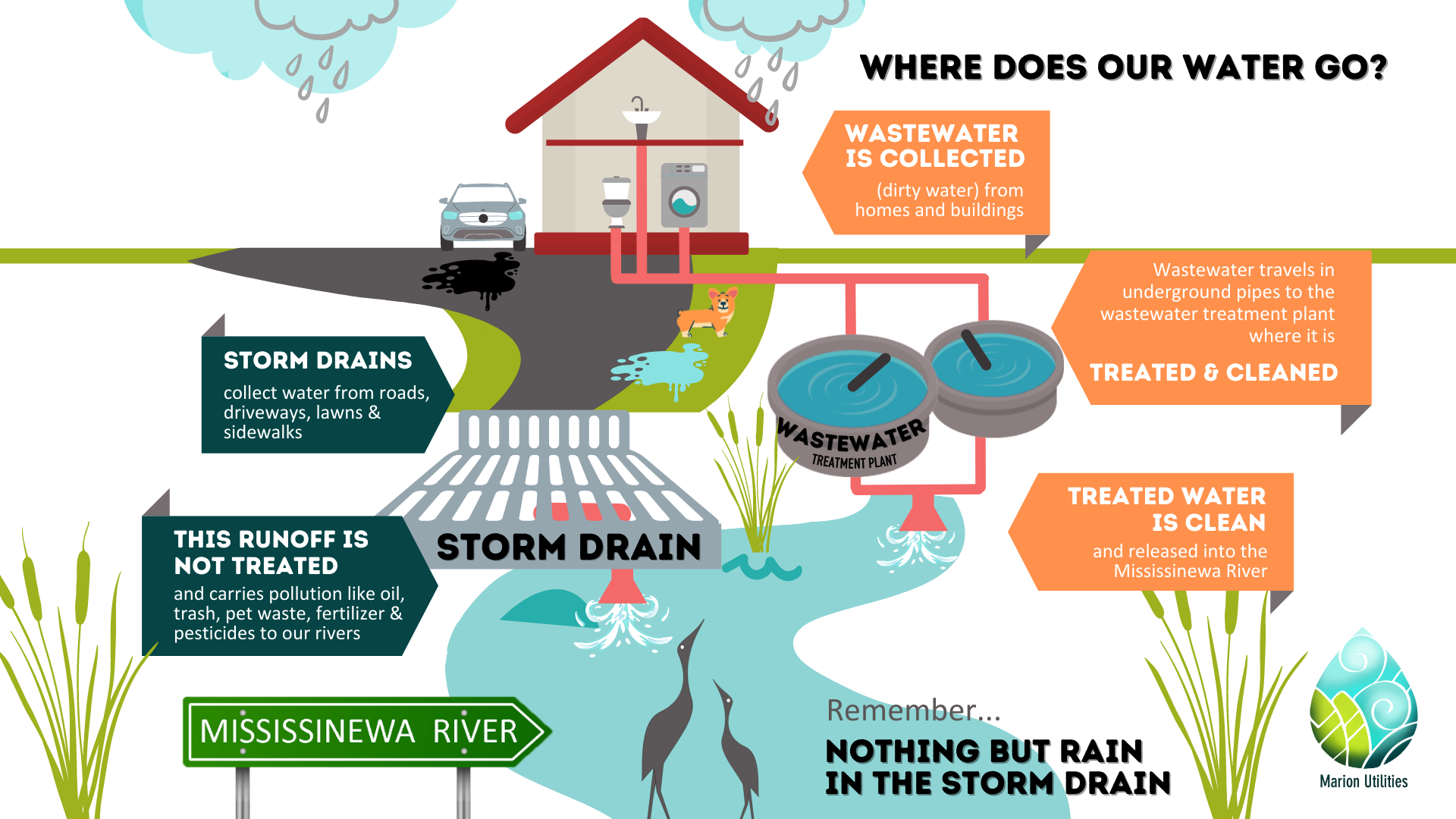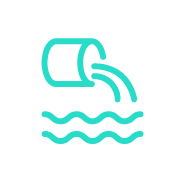Wastewater Divison
Our Wastewater Treatment Plant is where dirty water is renewed & purified through a biological process and returned to the Mississinewa River.

The Wastewater Process
Big screens are used to remove larger debris, grit that settles is pumped out
Removes solids that settle and float
Microorganisms need air to survive and consumer pollutants
Sludge that settles is pumped into digesters
Chlorine is added to kill harmful bacteria then removed
Clean waster is returned to the Mississinewa River through our outfall.
Screenings and Grit
Collections are landfilled
Sludge
Continues to decompose through anaerobic digestion
Methane Gas
Used as a heat and energy source at the plant
Biosolids
Used as fertilizer by local farmers
Where Does Our Water Go?

Have you ever wondered what happens to water after you flush the toilet or drain the kitchen sink?
If you live in Marion, your dirty water flows into our sewer system and is pumped to the wastewater treatment plant on Washington Street. At the plant, wastewater goes through a series of mostly natural and biological breakdown processes.
Some people think we dump a bunch of chemicals in to clean the water – and that’s not at all the case! The end product is a clean, disinfected flow that’s appropriate for our ecosystem. The water is released into the Mississinewa River.
Dewatered biosolids (and other products) that are leftover from our wastewater treatment process are available for use on local farmland – click on the residuals tab for more information.
Long-Term Control Plan
Sometimes when it rains, raw sewage mixed with stormwater from old combined sewers in Marion overflows into the Mississinewa River. Marion Utilities is currently addressing this problem, however, separating sewers requires significant financial expenditures that affects the whole city. The Long Term Control Plan is an ongoing series of projects to comply with federal mandates by separating combined sewers and putting in place other measures to keep raw sewage out of area waterways.
We Have Three Kinds of Sewers:

Storm Sewers
Carry only stormwater runoff.

Sanitary Sewers
Carry only sanitary waste.

Combined Sewers
Carry sanitary waste and stormwater runoff.
When they were constructed many years ago, the theory behind the combination sewer was twofold. During dry weather, it could transport sanitary waste to the treatment plant. During wet weather, both the sanitary waste and stormwater would be flushed to the treatment plant – but, if the sewer reached capacity, there is an overflow outlet and the combination sanitary/stormwater flow would discharge to the river. This discharge is called a Combined Sewer Overflow (CSO).
Sanitary waste discharged to the river can have a drastic impact on the water quality of the river.
High concentrations of metals from industrial discharges such as zinc, lead, copper, nickel, chromium, cadmium and mercury, low levels of dissolved oxygen due to the biological breakdown of organic waste and high levels of bacteria and pathogens can make the river unfit for recreational use, impair the rivers ecology, and in extreme cases, cause fish kills.
A study completed in 1988 showed that Marion discharged more than 1.1 billion gallons of raw sewage mixed with stormwater runoff on an annual basis. With improved maintenance focusing on storage within the system and over $12 million in sewer separation and system improvements, it is estimated that Marion now overflows less than 182 million gallons in an average year.